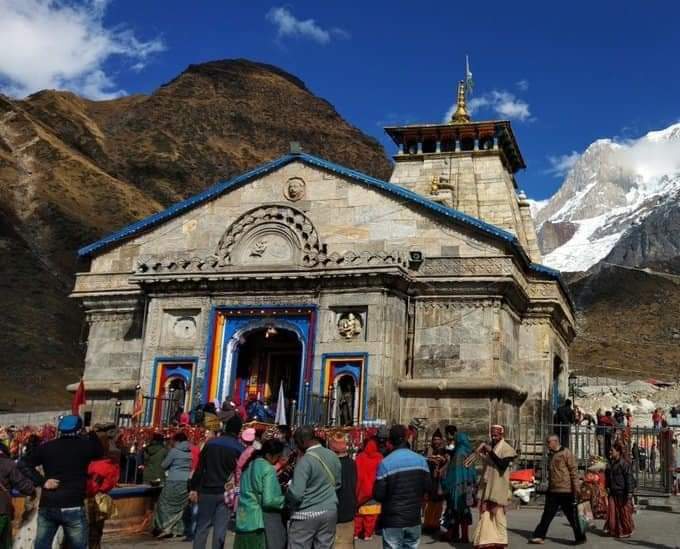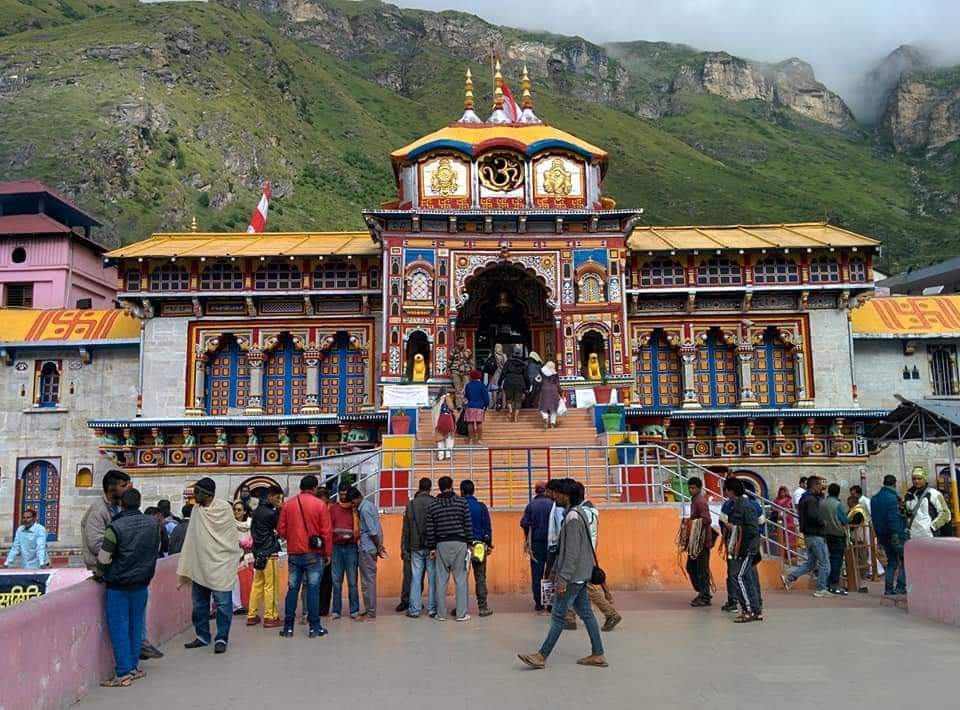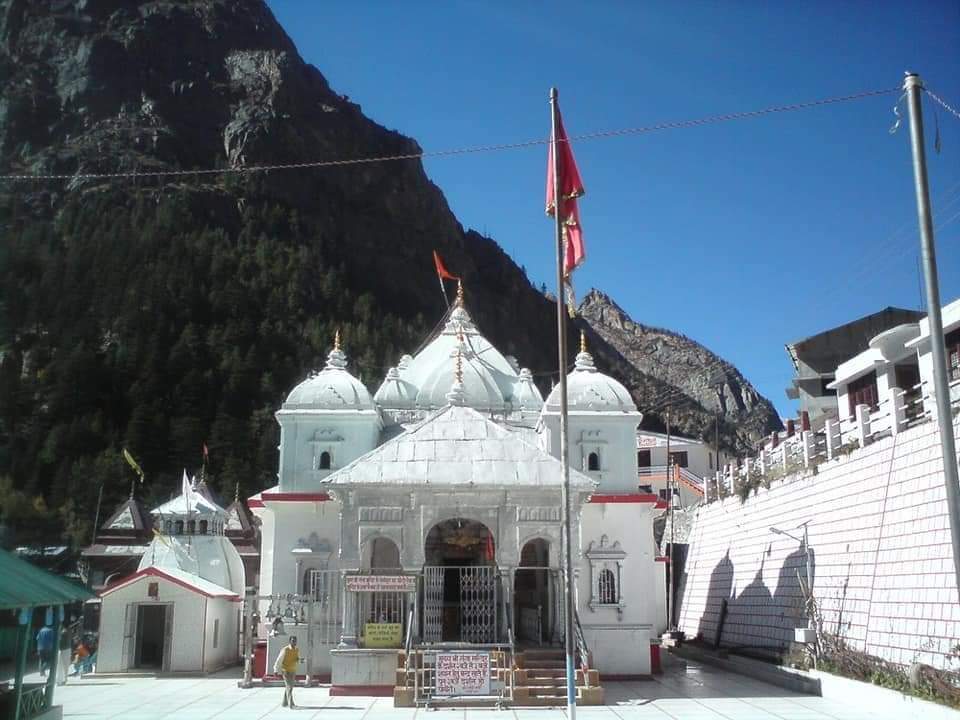



Transportation: Tempo Traveler
Accommodation
Meal: Breakfast and dinner
5% GST
Lakhamandal/Barkot: Devbhoomi Hotel/ Diyaraj Hotel
Uttarkashi: Shyam Residency
Phata: Shiv Nanda Resort
Kedarnath: Sitapur House/ Similar
Joshimath: Shivalik Cottage
Haridwar: Riverdale/ similar
Pick up from Delhi early in the morning from the decided time.
Arrival in Haridwar.
Make a Stop and Take a dip in the holy water of Ganga in Har ki Pauri.
Move to Barkot afterward.
You will get there in the evening.
Check in to the hotel and overnight stay there.
Barkot Weather – Generally agreeable in summer, the temperature ranges from 25-30 degrees Celsius, Winter: The Days are pleasantly cool but the nights are cold, temp ranges from 10 degrees to 05 deg.
Early morning after breakfast (packed breakfast), move to Jankichatti / Phoolchatti & star trek from here to Yamunotri (6kms) (Either by walk or by horse or by Doli at own cost). After taking a bath in Jamunabai Kund’s warm water and having “Darshan” of “Yamunaji” back to Jankichatti by trek.
Return to Barkot in the evening. Overnight stay in Barkot.
Yamunotri Temple: Maharani Gularia of Jaipur constructed the temple in the 19th Century. It was destroyed twice in the present century and rebuilt again. At Yamunotri, One can cook rice by packing it in a cloth and dipping it in the hot water of the Tapt kund. Pilgrims take this cooked rice home as “Prasad”. Here near the temple “Pooja” can be offered to Divya Shila.
Surya Kund: There are several thermal springs near the temple, which flows into numerous pools. The most significant of these is Surya Kund.
Yamunotri Weather – In summer the maximum temp is 18 degrees and the minimum is 10 degrees Celsius. The days are pleasantly cool but the nights are cold.
The morning after breakfast, move to Uttarkashi. Check into the hotel and reach Uttarkashi. Visit Kashi Vishwanath Temple in Uttarkashi.
Stay overnight at the Uttarakashi.
Uttarkashi is home to several ashrams and temples. The name of the town reflects its similarity to and location (north of) the city of Kashi (Varanasi). Similar to Varanasi, the town of Uttarkashi is also situated on the banks of the River Ganga.
Vishwanath temple – Vishwanath temple is one of the oldest Shiva temples in Northern India. Rebuilt in 1857 by Maharani Khaneti Devi of Tehri State in the ancient architectural style. It is situated at the heart of the town. A heavy iron trident, symbolic of the divine mother, has been erected and worshiped from time immemorial at the temple complex. Ganeshji, Sakshi Gopal, Markandeya Rishi’s small shrines are also part of the temple complex. Akhand Jyoti and Akhand Abhishek, special aarti in morning and evening are offered. As per Skunda Puran, Uttarkashi is known as ‘Saumya Varanasi’, the abode of Lord Shiva in Kaliyug, and counted as one of the twelve Jyotirlingas.
Shakti temple – Right in front of the Vishwanath temple is Shakti temple. It has a big ‘Trishul (Trident)’ of about 6 meters in height and a circumference of 90 cm. at the bottom. Though there are different views about the making of this, the upper part of it seems to be made up of iron and the lower one is of copper. As per the epics, this Shakti was thrown on the devils by the Goddess Durga (Shakti), hence it gets its name. Since then this Shakti has been erected over here.
Uttarkashi Weather – Generally hot in summer, the temperature ranges from 30-35 degrees Celsius but nights are pleasant, cold in winter.
Early morning (packed breakfast) move to Gangotri, on the way to Gangotri take a sacred dip in Garam Kund, and further drive to Gangotri via beautiful Harshil Valley. Harshil is famous for its natural beauty and for the majestic views of the Deodar trees and mountains. On arrival at Shree Gangotri, take a holy dip in the sacred river Ganges which is also called Bhagirathi at its origin. Perform Pooja and Darshan, and after that rest for some time in the lovely surroundings.
Gangotri Temple: The temple was built by the Gorkha General Amar Singh Thapa in the 18th Century, and is situated on the right bank of Bhagirathi.
Gangotri Weather – The maximum temperature during summer can go up to 20° Celsius. Summer nights can get cooler with a minimum temperature of 10° Celsius. Light woolen clothes are required while visiting Gangotri during summer. Winter season is very chilly in Gangotri. Gangotri will be covered in sheets of snow during winter. Pilgrim centers remain closed throughout winter due to massive snowfalls.
Later get back to Uttarkashi.
Stay overnight at Uttarkashi.
The morning after breakfast, move to Guptkashi via Moolgarh & Lambgoan.
On the way, you can see the beautiful river Mandakini at Tilwara. The Mandakini River comes from Kedarnath, drive alongside the river to reach Guptakashi, and visit Ardh Narishwar Temple in Guptakashi. Check into the hotel on arrival in Guptakashi.
Stay overnight at the Guptakashi.
Guptakashi:- The name Gupt Kashi means “Hidden Benares. Mythology describes how when the Pandava brothers were searching for a glimpse of Shiva, Shivji first concealed himself at Guptkashi but later fled from them further up the valley to Kedarnath, where the Pandavas finally got their wish fulfilled. There are more tangible relations as well Kedarnath pandas (priests) live in Guptkashi during the winter months, and after the Kedarnath temple closes for the winter, the image of Kedarnath passes through Gupt Kashi on its way to Ukhimath (across the valley), where it stays for the winter.
Guptkashi Weather – Agreeable in summer, the temperature ranges from 25-30 degrees Celsius. Cold in winter.
Overnight stay in Guptkashi.
Early morning after breakfast departure for Kedarnath Dham. Enjoy Kedarnath Darshan.
Stay overnight at Kedarnath.
By Helicopter: In the morning our driver will drop you off your pre-booked Helipad. You can inform the driver about your arrival time whether it will be by helicopter or by trek, so that the Driver will be there to pick you up. (Note: helicopter ticket is not included in this package).
By Trek: Morning our driver will transfer you to Sonprayag then you have to take a local jeep for Gaurikund & then your trek start for Kedarnath ji. After darshan, you follow the same & return to Sonpraag. There is a big parking issue so the driver will back to another palace if his contact no. is not working then you have to arrange another taxi or wait for your driver.
Kedarnath: The Kedarnath shrine, one of the 12 Jyotirlingas of Lord Shiva, is a scenic spot situated, against the backdrop of the majestic Kedarnath range. Kedar is another name of Lord Shiva. According to legend, the Pandavas after having won over the Kaurava in the Kurukshetra war, feel guilty of having killed their brothers and sought the blessings of Lord Shiva for ransom. He eluded them repeatedly and while fleeing took refuge at Kedarnath in the form of a bull. On being followed he dived into the ground, leaving his hump on the surface.
Kedarnath Weather – Due to its high elevation the weather in Kedarnath remains cold for most of the year. Summer here is cool and agreeable while winter is severe. During the summer season, the temperature varies around 20°Celsius. Light woolen wear is recommended. Winter season in Kedarnath is severe with mercury falling to as low as 0°Celsius. During this time the place experiences snowfall as well. Due to the extreme chilly climatic conditions, this time is usually avoided by tourists.
The morning after darshan, return to Guptkashi, overnight stay in Guptkashi.
Today will move to Joshimath from Guptkashi.
Joshimath, also known as Jyotirmath, is a town in the Chamoli district of Uttarakhand, India. It is an important pilgrimage site and a gateway to several religious destinations in the region, including Badrinath.
Narasimha Temple: The Narasimha Temple is dedicated to Lord Narasimha, an incarnation of Lord Vishnu. It is one of the important temples in Joshimath and holds religious significance for devotees.
Kalpavriksha: The Kalpavriksha in Joshimath is a sacred tree that is believed to be more than 1200 years old. It is considered to be a wish-fulfilling tree and is located near the Narasimha Temple.
Shankaracharya Math: The Joshimath Shankaracharya Math is a prominent religious institution founded by Adi Shankaracharya. It is an important center for learning and spirituality. The math has a shrine dedicated to Lord Badrinarayan.
Overnight stay in Joshimath.
The morning after breakfast, move to Badrinath.
Pilgrims after having a bath in the Taptkund have the Darshan of Badrivishal & Aarti in the evening. Brahamakapal is important for Pinddan Shraddh of ancestors (Pitrus).
Other interesting sightseeing spots include Mana, Vyas Gufa, Maatamoorti, Charanpaduka, Bhimkund, and the “Mukh” of the Saraswati River, just within the three km of Badrinathjee.
Mana Village: Inhabited by an Indo-Mongolian tribe, it is the last Indian village before Tibet.
Vasundhara: As the name suggests, Vasundhara is a magnificent waterfall. This place is 5 km. From Badrinath out of which 2 km is motorable up to Mana.
Bhim Pul: On the other side of Mana village, a heavy rock forming a natural bridge, lies over the roaring Saraswati River. It presents a spectacular view of water thundering down through the narrow passage under the rock and is believed to have been placed there by Bhim, the second eldest among the five Pandava brothers.
Vyas Gufa (cave): Nearly Mana Village, this is a rock cave where Veda Vyas is believed to have appeared in the Mahabharata and the Pauranic commentaries.
Badrinath Weather: The maximum temperature will be around 18° Celsius and the average minimum is 8° Celsius. Warm and woolen clothes are hence required for a stay in Badrinath throughout the year. Winter in Badrinath is often accompanied by snowfalls. Winter is very chilly with an average temperature of 5° Celsius. Due to the extreme chilly climatic conditions of weather, this time is usually closed for tourists.
Stay overnight at Joshimath
After morning breakfast, moving to Haridwar via Rishikesh.
Rishikesh ‘place of Sages’ is a celebrated spiritual town on the bank of Ganga and is surrounded by the Shivalik range of the Himalayas on three sides. It is said that when Raibhya Rishi did hard penances, God appeared by the name of “Hrishikesh” and this area henceforth firth came to be known as Rishikesh.
Visit Rishikesh Temples & SightSeeing – Laxman Jhula, Ram Jhula.
Later moved to Haridwar for an overnight stay.
Rishikesh: Named after the Lord Vishnu, Rishikesh is a spiritual city for Hindus. Located in the foothills of the Himalayas in northern India it is also known as the yoga center of the world and is home to many world-renowned ashrams. Rishikesh styles itself as the ‘Yoga Capital of the World’, with masses of ashrams and all kinds of yoga and meditation classes. The fast-flowing Ganges is surrounded by forested hills inside the city. Apart from temples and ashrams, Rishikesh is now a popular white-water rafting center, backpacker hang-out, and gateway to treks in the Himalayas.
After breakfast, drop to the Delhi drop-off point.
We would be more than happy to help you. Our team advisor are 24/7 at your service to help you.
8847 819 646